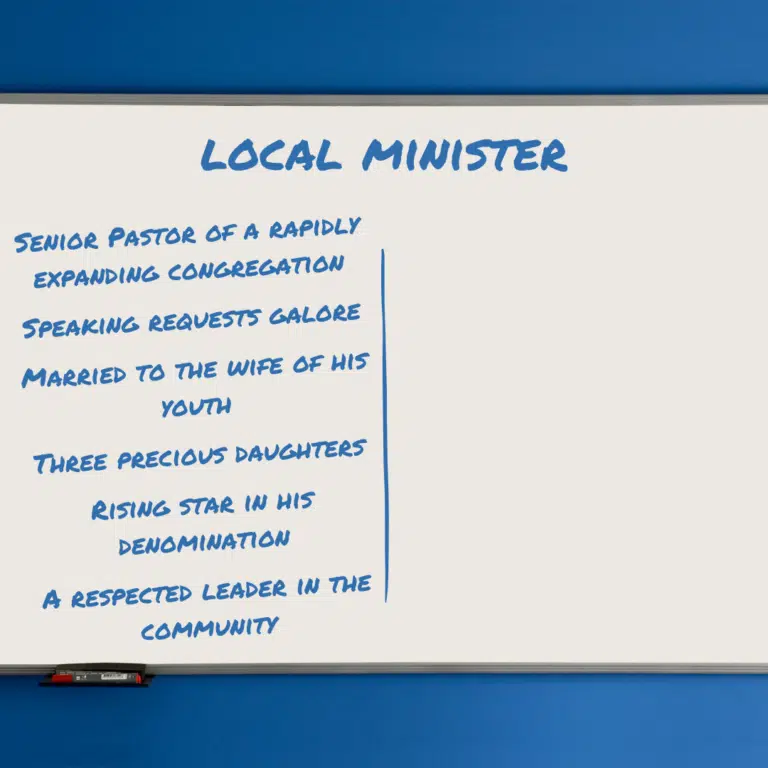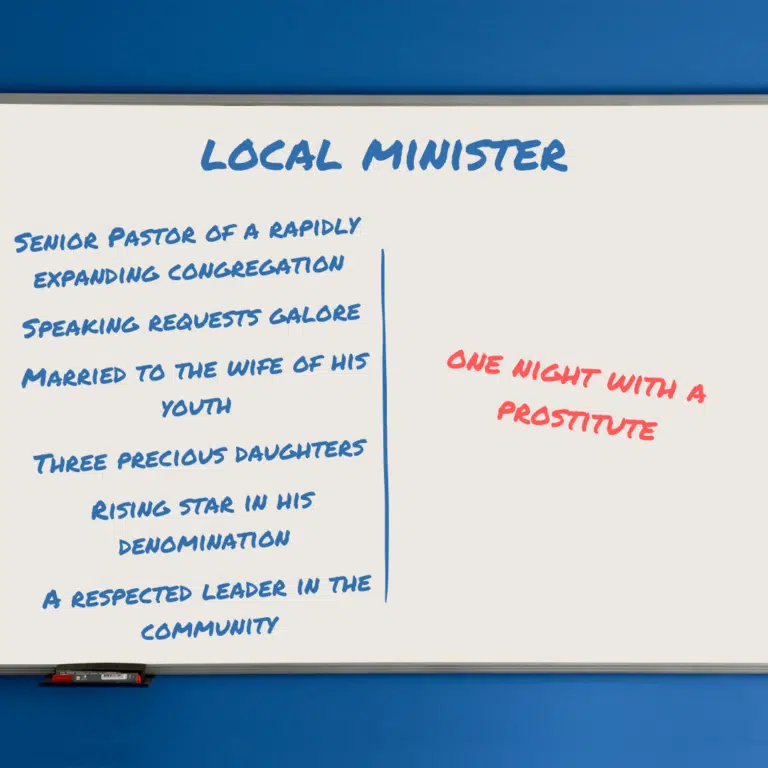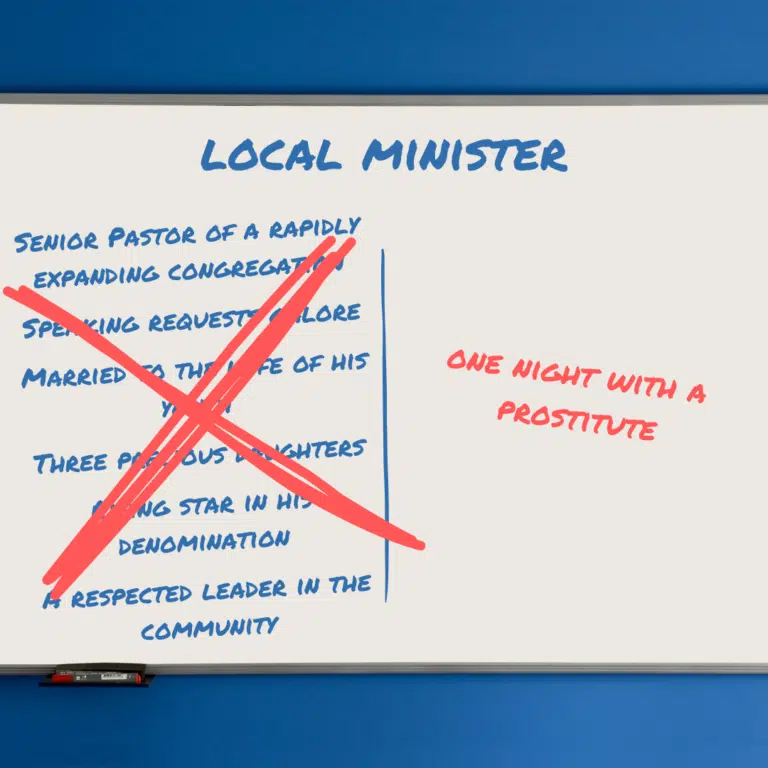CLICKBAIT
George Shamblin2024-03-14T18:47:25+00:00
One click stands between life and death. Want proof?
A seminary professor at RTS Jackson, Mississippi, began his two-hour lecture without uttering a word. Clearly agitated, he approached the whiteboard, scribbling two columns. On the left, under “local minister,” he listed a long series of ministry accolades:

|

Then, with a slight pause, his back turned to the students as he fixated on what he had just drawn; he marked out the column on the left with a giant “X.”

In what seemed like an eternity, he finally broke the silence: “Makes you wonder…was it worth it?” With that, the class was dismissed.
I’ve heard it said we don’t fall into sin; it’s more of a slide. Clickbait works much the same way. Clickbait uses a thumbnail link designed to entice users to follow (“click”) that link and read, view, or listen to the linked piece of online content; being typically deceptive or sensationalized. A “teaser” aims to exploit the “curiosity gap,” providing just enough information to make readers curious but not enough to satisfy their curiosity without clicking through to the linked content. Clickbait headlines often add an element of dishonesty, using enticements that do not accurately reflect the content being delivered. The “-bait” suffix makes an analogy with fishing, where a hook is disguised by an enticement, presenting the impression to the fish that it is a desirable thing to swallow.
It wasn’t clickbait exactly, but pretty much the same thing from an account recorded around 950 BC. Picture a larger-than-life snare similar to the one trappers use for birds. You know, the large basket propped up on its side held by a stick, with one end of a string attached to the stick, the other on the trapper’s hand. Bird seed scattered about its base. Not only did a young fool get suckered into coming closer and closer to the trap, but he ultimately took the bait, getting captured in the process. This provided his captor the perfect opportunity to finish him off with an arrow through the liver. Can you imagine the degree of naivety it took to get lured into such an obvious predicament? You can read the story as recounted in Proverbs 7.
A lot of attention has been given thus far to men, namely married men, and dads, and rightly so. I believe Scripture makes the case that a wife or mother gives an account to God for her own actions predominately, more than for her kids. The husband or dad, on the other hand, answers for the whole family. Like a tender warrior, note the emphasis on tender; it is his responsibility to lead gently and bravely to guide those under his care. My point is. However, women are no more immune from “one-click can kill” danger than men. The clicks may present differently, or they may look exactly the same. Either way, they’re no less lethal. Neither discriminates.
So, what’s the ultimate takeaway here? I’ll leave you with three:
1st – Don’t sell the Holy Spirit’s power short. The next time you’re tempted to go beyond looking through the lattice, tinker with a life-size snare, click the bait, or turn to the right or left when you know you shouldn’t remember your power source. If God’s spirit can raise the dead, convert mean souls, and make afflictions sweet, He can certainly empower you to resist. 2 Timothy 1:12;
2nd – Pass the Paul Test before forwarding this to others. Paul had the spiritual capital to tell others to imitate him, in other words, his example, which was an incredibly intimidating statement to make. It’s one thing to say, “Imitate me as I imitate Christ,” but to call upon others to imitate our example, now that’s gutsy. This doesn’t mean believers can set a perfect example. But it does mean we can set an honest example. It’s important to assess our own clicking habits before challenging others about theirs.
3rd – If one click, in fact, stands between life and death, at the very least, be willing to ask yourself, “Is it worth it?”
Jesus said, for those who have ears to hear, let them hear.
|
Author
In the summer of 1995, George Shamblin left a successful career in pharmaceutical sales to enroll at Reformed Theological Seminary in Jackson, Mississippi. Though he experienced more than his share of challenges and setbacks over the next 28 years, it's a decision he never regretted. Since 2012, Shamblin has been a pastor at The Center for Executive Leadership in Birmingham, Alabama, where he teaches Bible Studies and disciples others at various stages of spiritual growth. He serves on the board of Reel-Life International and has been an adjunct professor at Birmingham Theological Seminary. In 2023, he and his brother Keith co-founded a missions ministry, The Overseas Initiative. Shamblin published his first book, The Relay, in 2020 and was inducted into Marquis Who's Who that same year. An avid outdoorsman, as well as a Master Gardener, George and his wife of 30 years, Jill, have four children Sydney, Bailey, Miller, and George Jr.










